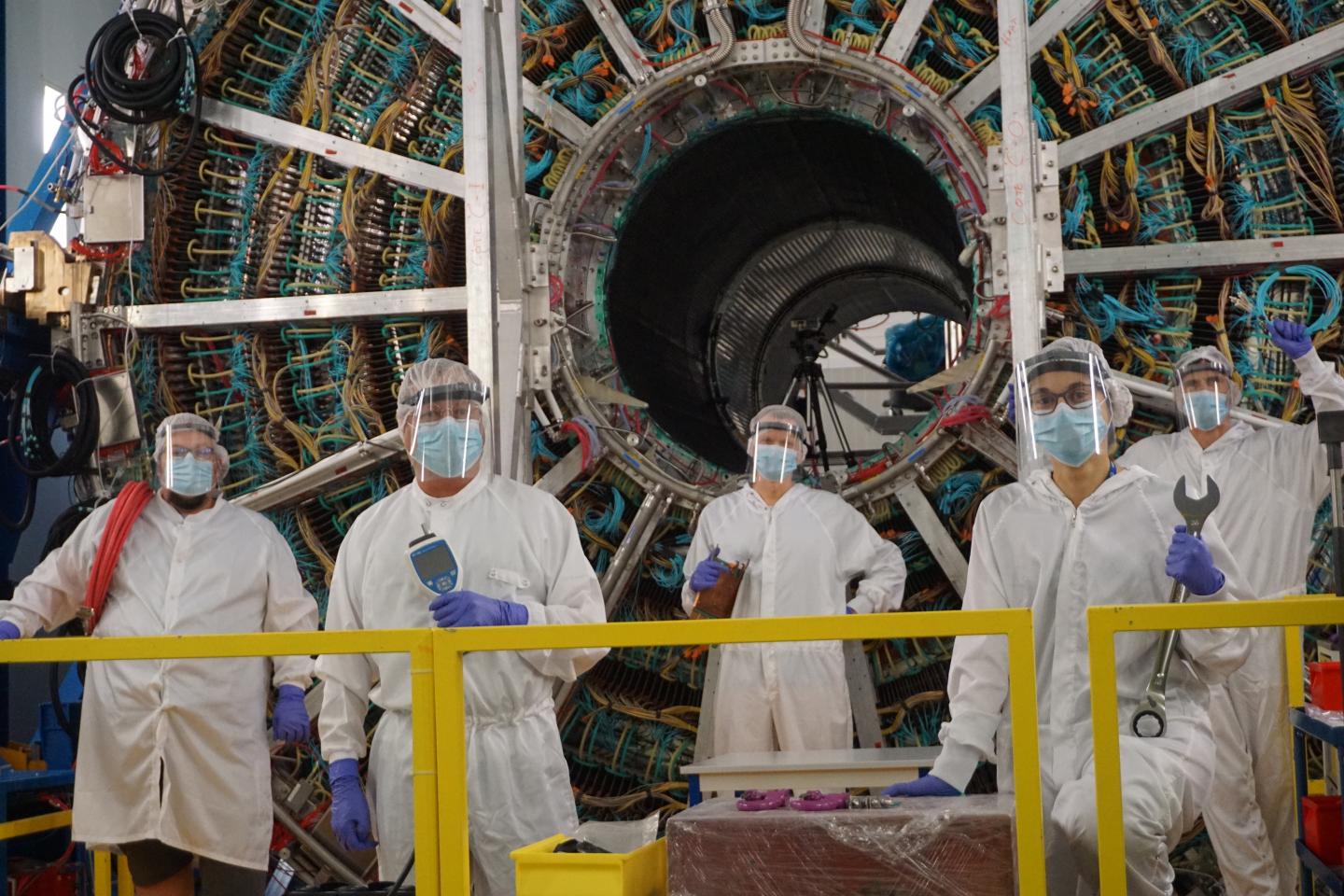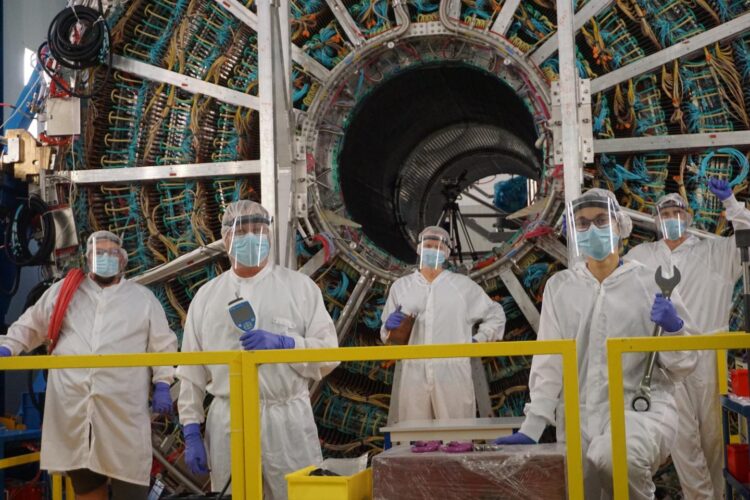Physicists at Goethe University lead one of the technical refurbishments of “ALICE” for researching quark-gluon plasma

Credit: Robert Münzer
FRANKFURT. For the moment, the accelerators at CERN are at rest during the “second long shutdown”. During this time, the accelerators undergo upgrades and refurbishments so that more particles can be accelerated and the number of collisions will increase in the future. The detectors are also undergoing upgrades. But while the large all-purpose detectors ATLAS and CMS are not scheduled for larger upgrades until the next, and third long shutdown in 2025, the specialised detector ALICE will enter the upcoming measurement campaign already upgraded.
ALICE is a unique project among the research adventures surrounding CERN’s Large Hadron Collider (LHC). While the other three detectors decipher what occurs in collisions of protons, the researchers in the ALICE experiment are concerned with lead ions – particles that are many times heavier. Each year, the LHC is operated with lead ions for one month so that the ALICE detector can collect data. The researchers want to learn more about a particular state of matter: quark-gluon-plasma. It is created inside the ALICE experiment when lead nuclei collide with each other at high energy and are dissolved into their elementary components for a short moment. In this hot and dense soup of matter, quarks and gluons, otherwise firmly attached in the protons and neutrons, can move around virtually freely. What happens during the collisions may provide insight into how our universe as we know it today was formed out of a giant primordial out of quark-gluon plasma.
Recording a movie instead of taking individual pictures
After the shutdown, the upgraded ALICE detector will show what it can now do: previously, the LHC accelerator delivered 10,000 collisions per second. At 18,000 particles per collision this amounts to 180 million particles per second, only a portion of which was able to be recorded by the ALICE detector. After the shutdown, the technological hurdles which have until now limited the number of recorded collisions will have been eliminated. The LHC should then deliver 50,000 collisions of lead ions per second, resulting in 900 million particles per second. “We want to record all collisions in entirety and, in fact, continuously, in other words, to record a movie instead of individual pictures,” explains Harald Appelshäuser, Professor at the Institute for Nuclear Physics at Goethe University Frankfurt and project leader of the subdetector that will make the biggest difference after the upgrade.
Detector under construction
To achieve this, one of the central detectors of the 26-metre long and 16-metre high ALICE detector complex, the Time Projection Chamber (TPC), was removed and carefully brought from the underground detector cavern into a clean room on the surface. Different parts that were developed all over the world during the past several years were gradually and carefully installed. Now the technologically upgraded TPC has been returned to its home at the heart of ALICE.
The highlights are the new readout chambers which no longer consist of many fine wires, but basically of about five billion tiny holes. In these holes, the signals of the charged particles will be amplified so that the scientists can precisely calculate the track of each particle. These chambers are called “GEMs” – Gas Electron Multipliers – and are a CERN invention which has already found its way into medical procedures. 500,000 channels ensure that nothing escapes the ALICE experiment. Each second during the collisions later results in 3.4 terabytes of data.
New procedures must also be developed which can process this flood of data. With the participation of high-performance computing expert Professor Volker Lindenstruth and his colleagues, scientists from Goethe University will be playing a leading role here as well. “We now have the finest of the fine and look forward to the first collisions,” says Appelshäuser.
The new GEM readout chambers were custom fit for the ALICE experiment through testing and development in Germany – at Goethe University Frankfurt as well as at the Bonn and Heidelberg Universities, the Technical University Munich, and the GSI Helmholtzzentrum für Schwerionenforschung, and later assembled in different countries which in addition to Germany included Hungary, Finland, Romania and the USA. “The logistics were pretty complicated,” explains project leader Appelshäuser. “The TPC was brought to the clean room in 2019 that was where we removed the older chambers and installed and tested the new ones. Luckily, we had just finished before the pandemic started.”
During the shutdown ALICE will also receive a new inner tracking chamber, positioned closer to the collision point and further increasing precision compared to its predecessor. And the detectors have to be precise, for only through exact determination of particle paths and particle energies can conclusions be reached about the first split seconds of the universe.
Additional images for download at CERN:
https:/
Current news about science, teaching, and society can be found on GOETHE-UNI online (http://www.
Goethe University is a research-oriented university in the European financial centre Frankfurt am Main. The university was founded in 1914 through private funding, primarily from Jewish sponsors, and has since produced pioneering achievements in the areas of social sciences, sociology and economics, medicine, quantum physics, brain research, and labour law. It gained a unique level of autonomy on 1 January 2008 by returning to its historic roots as a “foundation university”. Today, it is one of the three largest universities in Germany. Together with the Technical University of Darmstadt and the University of Mainz, it is a partner in the inter-state strategic Rhine-Main University Alliance. Internet: http://www.
Publisher: The President of Goethe University Editor: Dr. Markus Bernards, Science Editor, PR & Communication Department, Theodor-W.-Adorno-Platz 1, 60323 Frankfurt am Main, Tel: -49 (0) 69 798-12498, Fax: +49 (0) 69 798-763 12531, [email protected]
###
Media Contact
Harald Appelshäuser
[email protected]





